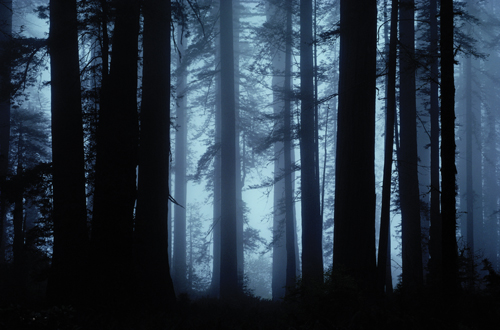
I stand on the ice-black ground of December, tearing apart matted roots of coastal iris, preparing to sow dark chestnut redwood seed in deep wooden boxes. To my wicked delight, the last celebrated plants of summer have frozen to death and been carted off to our roaring compost heap. My mind is free to range the stark terrain of winter.
“Directly arrive here,” encourages Hongzhi Zhengjue, the 12th-century Chan master of silent illumination. “Recognize the root source of the ten thousand things.” At ground level I return to resilience, the inmost capacity of an organism to recover from illness, change or misfortune and leap back to life. Examining my handful of dry redwood seed collected from the floor of the old-growth forest a few days ago, I wonder if these scaly seeds that feel so like the shriveled eyelids of a prehistoric tortoise will surge with green force and spring to life. In this morning-star season of Buddha’s enlightenment, great doubt and curiosity animate Zen inquiry.
Next door at Green Gulch Farm Zen Center, 80 ardent meditators are sitting Rohatsu sesshin in the stillness of the zendo. Without sangha guidance of drum and bell, how resilient is my practice, standing shin-deep in severed plant parts? I am reminded of my beloved dharma sister Gyokujun, with whom I trained for more than a decade at Tassajara Zen Mountain Center and Green Gulch Farm. I came across her one stormy December afternoon years later, long after she and her family had moved away from the Gulch. She was sitting zazen by herself at the root of a shaggy redwood tree in the pouring rain, wrapped in layers of fleece, covered by a yellow oil slicker, and sealed in the samadhi of raw intention.
At dawn a few mornings ago, there was a full eclipse of the moon. Sitting outside, I watched the illuminated sky disk darken to an eerie burnt orange, the brown shadow of earth swallowing the last dregs of moonlight. An old raccoon hissed at the edge of night. When it was light enough to see, I headed out to Muir Woods National Monument.
One of the last remaining old-growth sanctuaries of the maritime Pacific Northwest, Muir Woods is less than three miles from our home. These woods are a place of refuge fueled by the furnace of fungal decomposition. It takes a fallen redwood tree as long to rot and be recombined into the elemental forest as it does for that same tree to reach maturity, usually about 400 years. Today million-acre stands of old growth have been reduced by logging and accelerated climate change to less than 3 percent of their original size, yet as many as 70 different species exist in a square foot of forest soil, with more microorganisms in a handful of this duff than human beings on Planet Earth.
In the low slant of winter the Lazarus force of the redwood forest is invisibly displayed. Legions of mushrooms spring to life out of the wet ground. Coral fungus and Turkey Tails mingle with Studded Puffballs and Witch’s Butter fungi. The woods are alive with death.
How do we value organisms whose fecund presence escapes mindful scrutiny? Mushrooms are the fruiting bodies of a vast invisible fungal network that pervades the old-growth forest. The mycorrhizae, or fungus roots, run alongside and within the shallow, 50-foot-wide lateral root system that supports 300-foot-tall redwood trees. These fungi are of two kinds. Ectomy- corrhizal fungi surround underground tree roots, trading available nitrogen from their decomposition of organic matter for a wealth of carbohydrate-rich root exudates released from their host plants. Endomycorrhizal fungi penetrate the cells within the roots of specific forest plants, drawing and receiving symbiotic nourishment from this relationship while extending the worldwide web of the forest. Both types of fungi increase the health and range of forest soils by an estimated 700 times.
Before sowing the seed of coast redwood, I stir a fetid armload of forest litter into my organic soil mix. I am inoculating the ground with rot, the root source of the ten thousand things. Navigating this fungal highway to the palace of decay, I remember a line from the Zen Song of the Jewel Mirror Samadhi: “Penetrate the source and travel the pathways; embrace the territory and treasure the road.”
Thank you for subscribing to Tricycle! As a nonprofit, we depend on readers like you to keep Buddhist teachings and practices widely available.